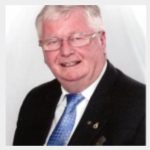
Article first posted at Conscious Reliability by James Reyes-Picknell, Jesus Sifonte, and team.
The Phonograph came first in 1877, cassette players arrived in 1971, CDs made it to the market in 1982 and the just arrived ultra-modern solid state hard drives are devices all capable of recording sound. Likewise, the 1876 telephone and the 2 decades old cell phone are all good for making possible long-distance conversations. Certainly, sometimes technology changes faster than our ability to adapt to it. When you are still getting used to a specific computer operating system X.1 its creator is already announcing the launch of the newer version X.2 and the extra features it brings making it a better option than its predecessor. A change to the new version’s ‘toy’ always seems more convenient than keeping the current stuff – just think of Apple’s product development trajectory!
[Read more…]











